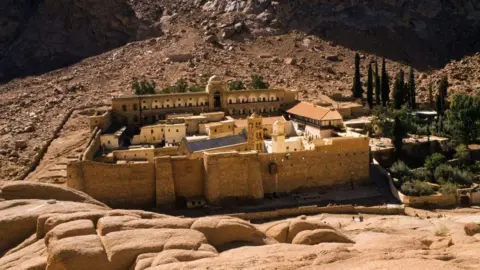A wooden toolbox adorned with inscribed symbols from an ancient Zambian writing system, Sona, has ignited discussions online about Africa’s intellectual history. Samba Yonga, co-founder of the Women's History Museum of Zambia, shared insights with the BBC, emphasizing how narratives have long suppressed the knowledge of reading and writing among African cultures. "We had our own ways of documenting stories and traditions that have been overlooked because of colonial narratives," Yonga remarked.
The unveiling of Sona has come alongside a larger campaign to celebrate women's contributions to pre-colonial society, as exemplified by artifacts that have remained hidden in global museums, including a unique leather cloak not seen in Zambia for over a century. "These objects tell stories that are crucial for understanding our identities," Yonga explained, lamenting how colonial experiences have distorted relationship perspectives with cultural heritage.
The initiative has gained traction on social media, where 50 artifacts have been shared to illustrate women's central roles in the cultures of Zambia. The Frame project aims not just to exhibit these artifacts but to reshape perceptions of African knowledge systems through an engaging digital platform. The campaign finds roots in Sweden, where Yonga, while visiting, discovered a vast collection of Zambian artifacts in the National Museums of World Cultures, revealing a surprising accumulation despite Zambia's lack of colonial ties to Sweden.
Alongside Yonga, co-founder Mulenga Kapwepwe discovered more than 650 Zambian items, ranging from fishing baskets to ceremonial masks, originally collected during the colonial period. Notably, the collection holds pristine leather cloaks, traditionally worn by women or used to shield their children, adorned with exquisite geometric designs.
During their exploration, Yonga and Kapwepwe realized the deep disconnect between these artifacts and their communities, revealing the fragile nature of collective memory tied to cultural crafts such as the leather cloaks. Among the project highlights is Sona, a distinctive script that incorporates geometric patterns used throughout the lives of the Chokwe, Luchazi, and Luvale peoples, extending beyond mere writing into the realms of community health, mathematics, and nature.
"We’re excited by the public's response to Sona," says Yonga. Posts demonstrating its use have sparked astonishment and curiosity—demonstrating a desire for reconnection and identity rediscovery. Notably, a grinding stone traditionally used by Tonga women has redefined the narrative around its significance, serving as a poignant reminder of women's influence and importance.
The Women's History Museum of Zambia was founded in 2016, a space for reclaiming lost histories and documenting indigenous knowledge. Yonga describes this undertaking as a treasure hunt—a journey of self-discovery that she hopes will illuminate the rich cultural tapestry of the community for many others, transforming lives through the lens of shared historical understanding.






















